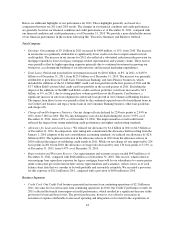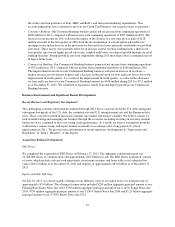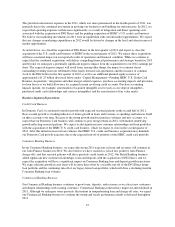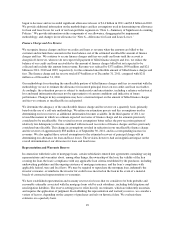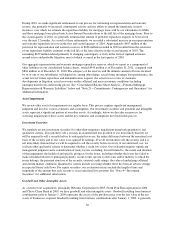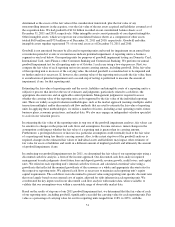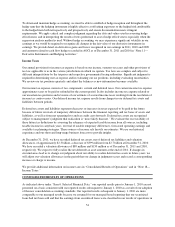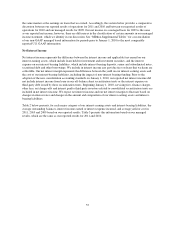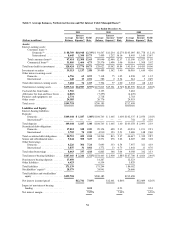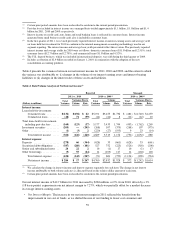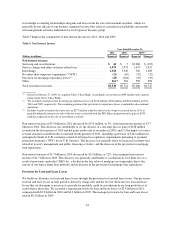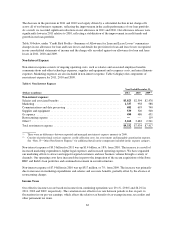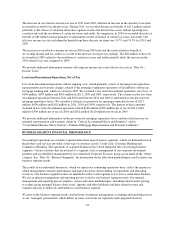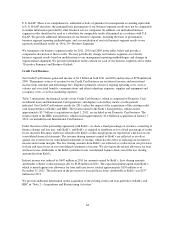Capital One 2011 Annual Report Download - page 74
Download and view the complete annual report
Please find page 74 of the 2011 Capital One annual report below. You can navigate through the pages in the report by either clicking on the pages listed below, or by using the keyword search tool below to find specific information within the annual report.
To obtain and maintain hedge accounting, we must be able to establish at hedge inception and throughout the
hedge term that the hedging instrument is highly effective at offsetting exposures to the hedged risk attributable
to the hedged item both retrospectively and prospectively and ensure documentation meets stringent
requirements. We apply critical and complex judgment regarding the data and values used in assessing hedge
effectiveness and in interpreting the results of tests performed to assess hedge effectiveness especially when the
regression analysis method is used. Without hedge accounting, we may experience significant volatility in our
earnings as we would be required to recognize all changes in the fair value of our derivative instruments in
earnings. We provide detail on derivatives gains and losses recognized in our earnings in 2011, 2010 and 2009
and amounts related to cash flow hedges recorded in AOCI as of December 31, 2011 and 2010 in “Note 11—
Derivative Instruments and Hedging Activities.”
Income Taxes
Our annual provision for income tax expense is based on our income, statutory tax rates and other provisions of
tax law applicable to us in the various jurisdictions in which we operate. Tax laws are complex and subject to
different interpretations by the taxpayer and respective governmental taxing authorities. Significant judgment is
required in determining our tax expense and in evaluating our tax positions, including evaluating uncertainties.
We review our tax positions quarterly and adjust the balances as new information becomes available.
Our income tax expense consists of two components: current and deferred taxes. Our current income tax expense
approximates taxes to be paid or refunded for the current period. It also includes income tax expense related to
our uncertain tax positions and revisions of our estimate of accrued income taxes resulting from the resolution of
income tax controversies. Our deferred income tax expense results from changes in our deferred tax assets and
liabilities between periods.
Deferred tax assets and liabilities represent decreases or increases in taxes expected to be paid in the future
because of future reversals of temporary differences between the financial reporting and tax bases of assets and
liabilities, as well as from net operating loss and tax credit carryforwards. Deferred tax assets are recognized
subject to management’s judgment that realization is “more likely than not.” We evaluate the recoverability of
these future tax deductions by assessing the adequacy of expected taxable income from all sources, including
taxable income in carryback years, reversal of taxable temporary differences, forecasted operating earnings and
available tax planning strategies. These sources of income rely heavily on estimates. We use our historical
experience and our short and long-range business forecasts to provide insight.
At December 31, 2011, we have recorded deferred tax assets, net of deferred tax liabilities and valuation
allowances, of approximately $2.3 billion, a decrease of $399 million from $2.7 billion at December 31, 2010.
We have recorded a valuation allowance of $89 million and $130 million as of December 31, 2011 and 2010,
respectively. We expect to fully realize the net deferred tax asset amounts at the end of 2011. If changes in
circumstances lead us to change our judgment about our ability to realize deferred tax assets in future years, we
will adjust our valuation allowances in the period that our change in judgment occurs and record a corresponding
increase or charge to income.
We provide additional information on income taxes in “Consolidated Results of Operations” and in “Note 18—
Income Taxes.”
CONSOLIDATED RESULTS OF OPERATIONS
As indicated above under “Item 6. Selected Financial Data,” our reported results prior to January 1, 2010 are not
presented on a basis consistent with our reported results subsequent to January 1, 2010 as a result of our adoption
of the new consolidation accounting standards. Our reported results subsequent to January 1, 2010 are more
comparable to our managed results because we assumed for our managed based reporting that our securitized
loans had not been sold and that the earnings from securitized loans were classified in our results of operations in
54


